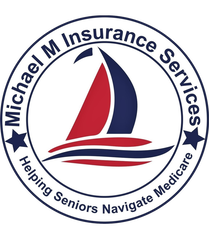Should I change my Medicare Supplement Plan? Learn about switching from Plan G to Plan N,
High Deductible Plan G, or Medicare Advantage — and what to know about rules in different
states.
In our last discussion about health plan utilization , we looked at how often you use your Medicare Supplement coverage and how that can influence your decision to keep or change
your plan.
If you’ve decided your current coverage may no longer be the perfect fit, the next question
becomes:
What are your options — and how do you make the switch?
1. Switching from Plan G to Plan N
Plan G is one of the most comprehensive Medicare Supplement plans, covering nearly all costs
except the Part B deductible. But its premiums can be higher than some people need, especially
if they’re in good health.
Why consider Plan N?
- Lower monthly premium compared to Plan G.
- Same coverage for Hospital and most medical services.
- A few differences: you may pay up to $20 for a primary care visit, up to $50 for an ER visit (waived if admitted), and you’re responsible for Medicare Part B “excess charges” if your provider bills them.
Important:
- In states like New York , you can change Medicare Supplement plans at any time without answering health questions — it’s called guaranteed issue .
- In most other states , changing plans after your initial enrollment requires medical underwriting , meaning the insurance company can ask health questions and could denyyour application or charge more based on health history.
2. Switching from Traditional Plan G to High Deductible Plan G
If you like the full coverage of Plan G but want a lower premium, the High Deductible Plan G
might be a good option.
How it works:
- You pay a much lower monthly premium.
- Before your plan starts paying, you cover costs up to the annual deductible ($2,800 in2025).
- Once you hit the deductible, coverage works just like a regular Plan G.
Best for:
- People in good health who don’t expect many medical expenses but still want strong protection in case of a major event.
3. Considering Medicare Advantage
Some people enroll in a Medicare Supplement when they first turn 65 and never look at other
options. But if you’re hardly using your coverage, Medicare Advantage (Part C) could be worth
exploring.
Key differences:
- Often $0 or low monthly premium (you still pay your Part B premium).
- Includes hospital and medical coverage, plus extras like dental, vision, hearing, and gymmemberships.
- Usually has a provider network (HMO or PPO).
- Has an annual maximum out-of-pocket limit for medical costs.
Best for:
- People who don’t mind using a network of doctors.
- Those looking to reduce premiums and get additional benefits.
4. When You Can Make a Change
The ability to change depends on where you live and what type of plan you’re moving to :
- From one Supplement plan to another:
○ Guaranteed issue states (like New York) — change anytime without healthquestions.
○ Other states — most changes require medical underwriting. - From a Supplement to Medicare Advantage:
○ You can switch during the Medicare Annual Enrollment Period (October 15 – December 7).
○ Some people may also qualify for a Special Enrollment Period.
5. Things to Consider Before Switching
Changing your Medicare coverage is not just about saving money — it’s about making sure the
plan still works for you.
Ask yourself:
- How often do I use my coverage now?
- What would my costs look like under the new plan in both a healthy year and a bad” health year?
- Am I willing to take on more out-of-pocket risk for a lower monthly premium?
- Will my doctors and hospitals be covered if I choose Medicare Advantage?
- Could my health change in ways that make switching back harder later?
Bottom Line
Whether you’re a “Frequent Flyer” who visits multiple doctors each month or someone who
rarely needs care, your Medicare Supplement should match your current needs and budget.
If your health has changed — for better or worse — it may be the perfect time to look at Plan N , High Deductible Plan G , or even Medicare Advantage . The right choice is the one that balances peace of mind, cost, and flexibility for the way you live now and the years ahead.

